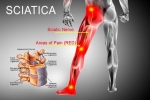Home »
Blog » Pain Management
| Stem Cell, PRP, Acupuncture in Queens & Long Island, New York
Pain Management | Stem Cell, PRP, Acupuncture in Queens & Long Island, New York
It’s scary being diagnosed with Fibromyalgia. But with smart and careful management, Fibromyalgia need not hold you back in life.
What Is Fibromyalgia? Fibromyalgia is a chronic disorder that causes widespread pain, along with fatigue and a variety of other symptoms. It is sometimes called fibromyalgia syndrome (FMS). It’s a condition that is not well understood but is being researched more all the time; more answers are coming to the forefront and with them, a better understanding of how to help fibromyalgia patients.
Read more
Tennis balls act like foam rollers and can be useful in relieving lower back pain. Massaging the lower back with tennis balls can help loosen soft tissues, release tension, relieve entrapped nerves, and improve flexibility. This blog explains the healing benefits of using tennis balls for self-massage and provides 3 unique and effective ways in which you can use tennis balls to relieve lower back and/or leg pain. As an alternative, if you require more firm pressure, a lacrosse ball can be used in the same fashion.
Read more
A new revolutionary development in pain treatment is showing incredible promise for superseding traditional remedies such as surgery and steroid injections. Platelet-rich plasma (PRP) therapy uses your own blood platelets to alleviate pain in soft tissue injuries involving your joints, including tendonitis, rotator cuff tears, or even Achilles tendon ruptures. PRP injections are also effective at reducing pain caused by osteoarthritis of the spine.
Read more
Stress causes pain, and pain causes stress: this cycle is tough to break but it is possible to do so. This blog explains how. Stress and chronic pain are far more intertwined than you might think; one can cause the other and you can become stuck in this cycle which is increasingly hard to get out of, but it is possible to break free!
Read more
Loved ones of someone struggling with chronic pain can often feel helpless. This post explains what you can do to help a loved one get better. Chronic pain conditions do not only affect the individual who suffers from them, they have a knock-on effect on family and friends who watch their loved one struggle. Often it can be worrying and frustrating for loved ones who want to help but perhaps aren’t sure how to go about it and may feel helpless.
Read more
Severe sciatic nerve pain can make exercise seem impossible. But don't despair, these 3 tips can help get you up and keep you moving: 1. Stimulate Your Soft Tissues With Heat. Applying heat to your rear pelvis for 15 to 20 minutes prior to your exercise can help in the following ways:
-Improve blood flow. Heat therapy increases the temperature of tissues, causing blood vessels to dilate. Dilation of blood vessels improves the flow of blood, oxygen, and healing nutrients to your lower back.
Read more
Osteoarthritis (OA) remains to constitute a large burden to healthcare and negatively impact the quality of life; along with other conditions ranked as 11th highest contributors of global disability. The estimated prevalence of problematic hip/knee OA is approximately 242 million globally; 3.8% accounting for decreased quality of life (QoL) and societal burden.
Read more
When it comes to living with a chronic pain condition, self-care becomes even more vital. Let’s take a look at what self-care is, why it’s vital and how you can implement it. Self-care is so important for everyone; ensuring that you are prioritizing yourself and taking good care of yourself is vital, but it becomes even more important when you live with extra challenges like chronic pain conditions. This study shows that supporting patient self-care is recognized as a crucial factor in chronic illness care.
Read more
When back pain is caused by a spinal disc problem, the source of the pain is either from a nerve being irritated by a protruding disc, or from the disc itself. Differentiating between the two can cause confusion, as doctors may use a variety of terms to describe the problem, such as a slipped disc, protruding disc, pinched nerve, and/or degenerated disc.
Read more
Chronic low back pain affects 68% of adults older than the age 60 worldwide. Stem cell therapy has shown beneficial results as an alternative to conventional regimens in the management of degenerative disc disease (DDD). The objective of stem cell therapy is to restore the disc’s cellularity and minimization of the inflammatory response.
Read more
Love this Post? Spread the World






















